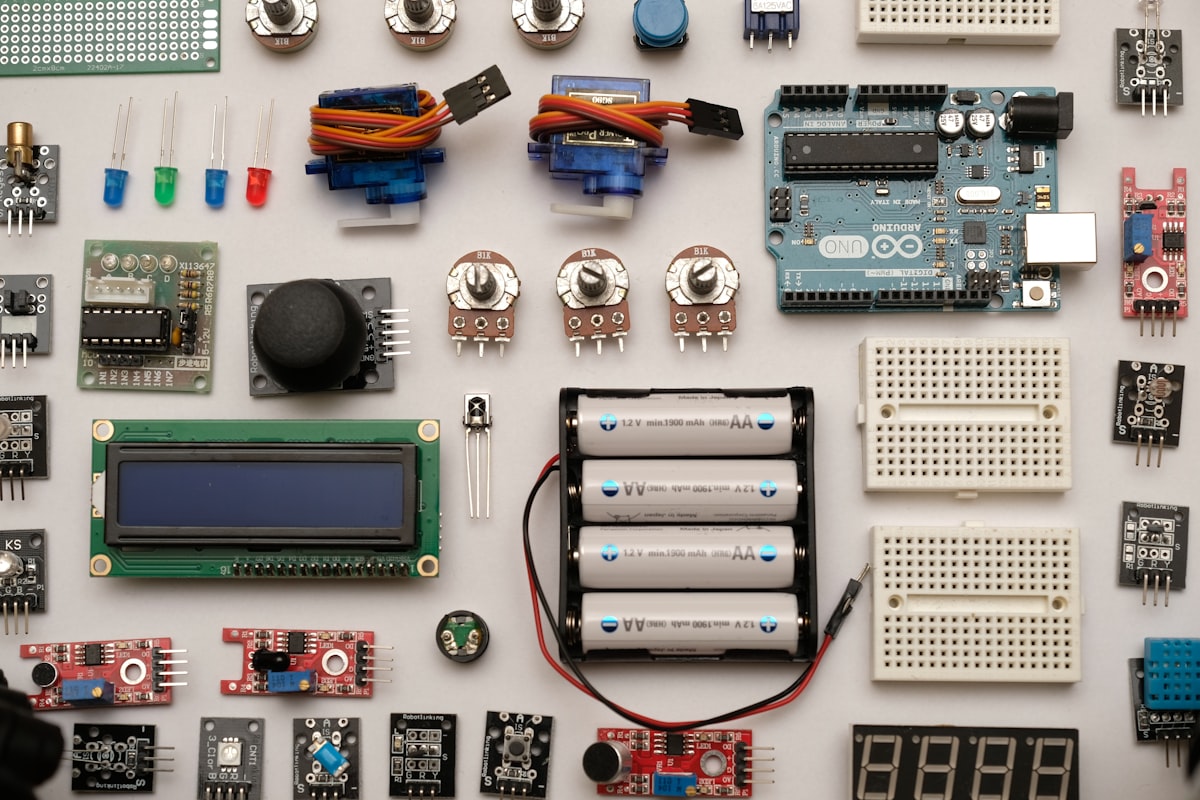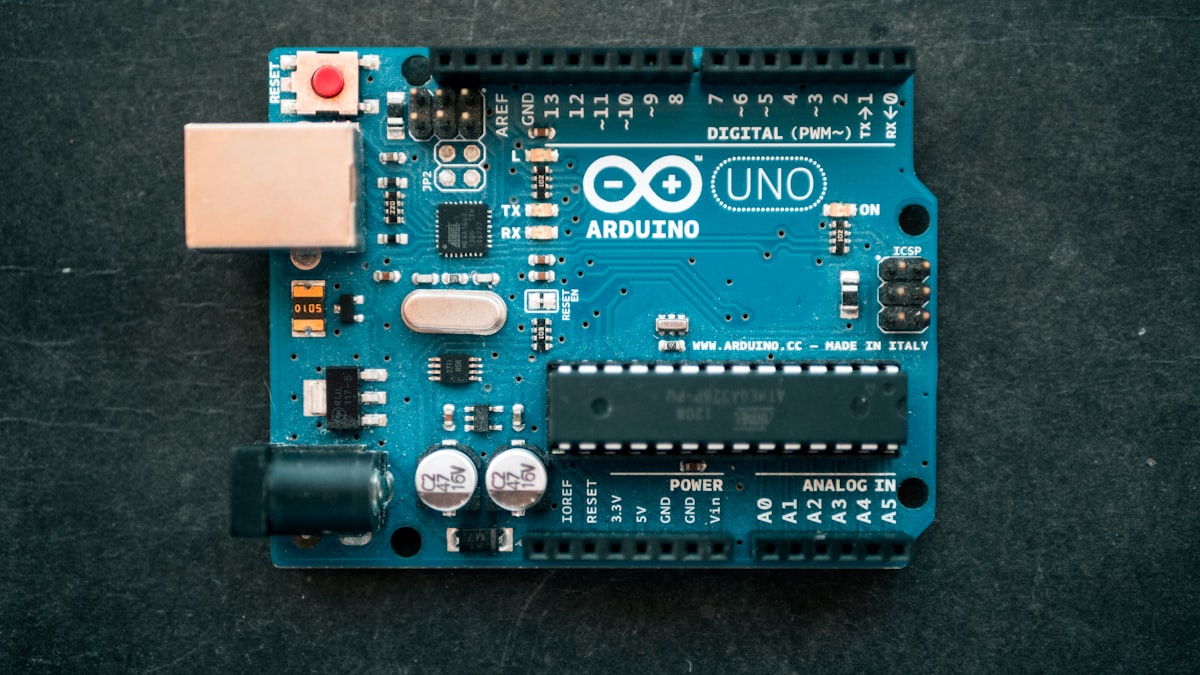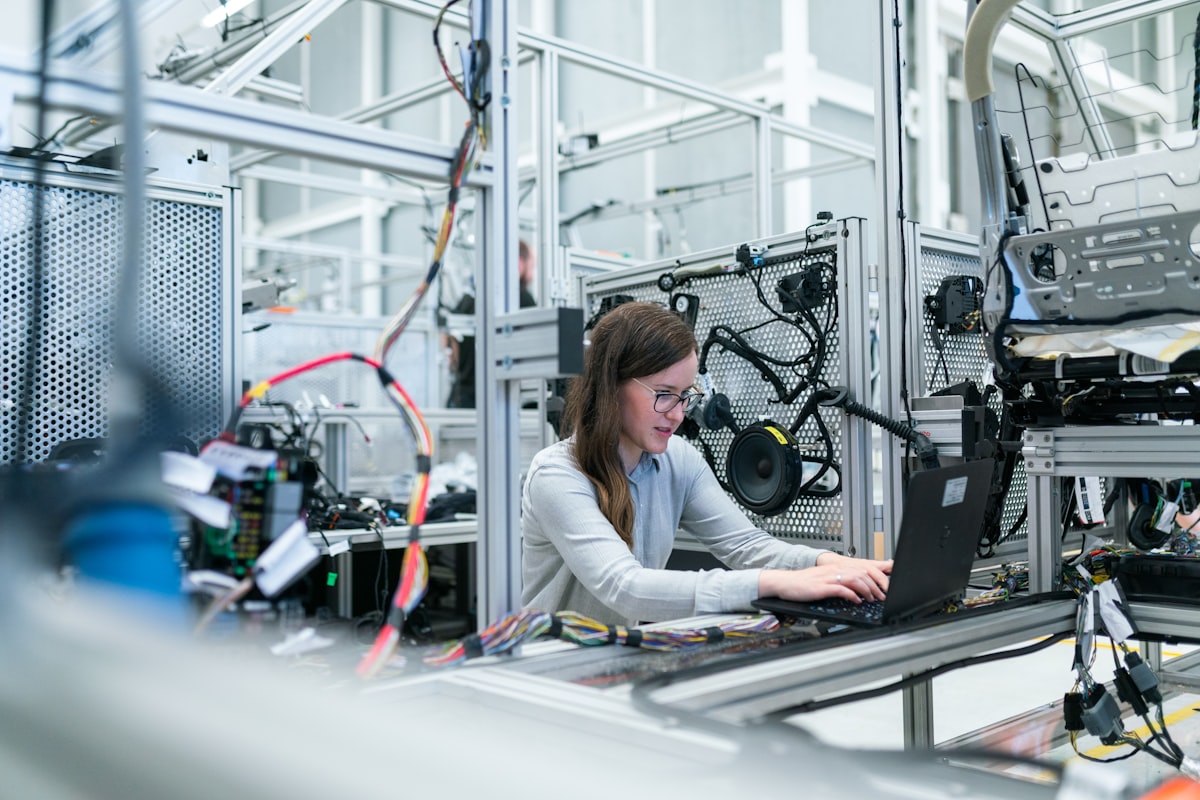De juiste microcontroller kiezen voor je project
20 december 2024Alex Rivera, Innovation Strategy Lead6 min read

De juiste microcontroller (MCU) selecteren kan je project maken of breken. Met duizenden opties beschikbaar, van eenvoudige 8-bit controllers tot krachtige 32-bit systems-on-chip, vereist de juiste keuze maken het balanceren van technische vereisten, kostenbeperkingen en toekomstige schaalbaarheid. Laten we samen door dit complexe landschap navigeren.
Begin met je vereisten
Voordat je in datasheets duikt, definieer duidelijk wat je product moet doen:
Kernfunctionaliteitsvragen
- Wat is de hoofdtoepassing? IoT-sensor, motorbesturing, gebruikersinterface, dataverwerking?
- Real-time vereisten? Harde real-time behoeften kunnen toegewijde randapparatuur of RTOS-ondersteuning vereisen
- Connectiviteitsbehoeften? Wi-Fi, Bluetooth, cellular, of alleen UART/SPI/I2C?
- Stroombudget? Batterij-aangedreven apparaten hebben ultra-lage-stroom modi nodig
- Omgevingscondities? Temperatuurbereik, vochtigheid, trillingen beïnvloeden behuizingskeuze
Technische specificaties ontcijferd
MCU-specificaties begrijpen helpt je opties effectief te filteren:
Verwerkingsarchitectuur
-
8-bit (AVR, PIC, 8051): Eenvoudige besturingstaken, kostengevoelige toepassingen
- Voordelen: Lage kosten (€0,50-€3), eenvoudige programmering, voorspelbare timing
- Nadelen: Beperkte verwerkingskracht, klein geheugen, basis randapparatuur
- Voorbeeldgebruik: Basis sensoren, eenvoudige motorbesturing, LED-drivers
-
16-bit (MSP430, PIC24, dsPIC): Gebalanceerde prestaties en stroom
- Voordelen: Betere rekenkundige prestaties, meer geheugen, geavanceerde randapparatuur
- Nadelen: Hogere kosten (€2-€8), complexer dan 8-bit
- Voorbeeldgebruik: Medische apparaten, industriële sensoren, motorbesturing
-
32-bit (ARM Cortex-M, RISC-V, ESP32): Hoge-prestatie toepassingen
- Voordelen: Krachtige verwerking, groot geheugen, rijke randapparatuur, goed ecosysteem
- Nadelen: Hoger stroomverbruik, complex ontwerp, kosten (€3-€20+)
- Voorbeeldgebruik: IoT-gateways, complexe besturingssystemen, edge AI
Geheugenarchitectuur
Geheugen is vaak de beperkende factor in embedded toepassingen:
-
Flash-geheugen: Programmaopslag
- 8-32KB: Eenvoudige toepassingen, basisbesturing
- 64-256KB: Complexe algoritmen, RTOS, netwerkstacks
- 512KB+: Graphics, data logging, OTA-updates
-
RAM: Variabele opslag en stack
- 2-8KB: Basistoepassingen
- 16-64KB: RTOS, netwerken, buffering
- 128KB+: Beeldverwerking, complexe datastructuren
-
EEPROM/Data Flash: Non-volatile configuratieopslag

Randapparatuurvereisten
Ingebouwde randapparatuur kan externe componenten elimineren en systeemkosten verlagen:
Communicatie-interfaces
- UART: Eenvoudige seriële communicatie, debug-uitvoer
- SPI: Hoge-snelheidscommunicatie met displays, flash-geheugen
- I2C: Multi-apparaat communicatie, sensoren, EEPROM's
- USB: PC-connectiviteit, stroomlevering
- CAN: Automotive en industriële netwerken
- Ethernet: Netwerkconnectiviteit voor IoT-toepassingen
Analoge functies
- ADC-resolutie: 10-bit (basis), 12-bit (standaard), 16-24 bit (precisie)
- ADC-snelheid: Overweeg sample rate vs resolutie trade-offs
- DAC: Audio-uitvoer, analoge besturingssignalen
- Comparators: Snelle analoge drempeldetectie
- Op-amps: Signaalkonditionering zonder externe componenten
Timing en besturing
- Timers: PWM-generatie, gebeurtenis-timing, pulstelling
- RTC: Real-time klok voor tijdstempels, planning
- Watchdog: Systeembetrouwbaarheid en foutherstel
- DMA: Efficiënte dataoverdracht zonder CPU-interventie
Populaire MCU-families vergeleken
Laten we de meest voorkomende keuzes in de huidige markt bekijken:
STM32 (STMicroelectronics)
- Architectuur: ARM Cortex-M0/M3/M4/M7
- Sterke punten: Enorme selectie, uitstekende randapparatuur, sterk ecosysteem
- Zwakke punten: Kan overweldigend zijn, sommige chiptekorten
- Het beste voor: Professionele producten, complexe toepassingen
- Prijsbereik: €1-€15
ESP32/ESP8266 (Espressif)
- Architectuur: Xtensa LX6 (ESP32), Xtensa L106 (ESP8266)
- Sterke punten: Ingebouwde Wi-Fi/Bluetooth, geweldige waarde, actieve gemeenschap
- Zwakke punten: Hoger stroomverbruik, beperkte lage-strommodi
- Het beste voor: IoT-projecten, draadloze toepassingen
- Prijsbereik: €2-€8
ATmega/AVR (Microchip)
- Architectuur: 8-bit AVR
- Sterke punten: Eenvoudig, goed gedocumenteerd, Arduino-compatibel
- Zwakke punten: Beperkte prestaties, geheugenbeperkingen
- Het beste voor: Leren, eenvoudige besturing, bewezen ontwerpen
- Prijsbereik: €1-€5
nRF52/nRF53 (Nordic Semiconductor)
- Architectuur: ARM Cortex-M4/M33
- Sterke punten: Uitstekende Bluetooth-implementatie, ultra-laag stroomverbruik
- Zwakke punten: Beperkte randapparatuur, gericht op draadloos
- Het beste voor: Bluetooth Low Energy producten, wearables
- Prijsbereik: €2-€10
RP2040 (Raspberry Pi)
- Architectuur: Dual-core ARM Cortex-M0+
- Sterke punten: Unieke PIO-blokken, goede documentatie, lage kosten
- Zwakke punten: Geen interne flash, beperkte analoge functies
- Het beste voor: Aangepaste protocollen, onderwijs, maker-projecten
- Prijsbereik: €1-€2
Stroomverbruikoptimalisatie
Voor batterij-aangedreven apparaten drijft stroomverbruik MCU-selectie:
Lage-stroom functies om naar te zoeken
- Meerdere slaapmodi: Van lichte slaap tot diepe uitschakeling
- Ontwaakmogelijkheden: RTC, GPIO, serieel, comparator
- Stromdomeinen: Schakel ongebruikte randapparatuur uit
- Dynamische spanningschaling: Verlaag spanning bij lagere frequenties
- Efficiënte regulatoren: Buck-converters vs LDO's
Echte stroomverbruikcijfers
- Actieve modus: 30-200 µA/MHz typisch
- Slaap met RTC: 1-5 µA
- Diepe slaap: 50-500 nA
- Opstarttijd: 1-100 µs (beïnvloedt gemiddeld stroomverbruik)
Ontwikkelingsecosysteem
De beste MCU is er een waar je daadwerkelijk efficiënt voor kunt ontwikkelen:
Ontwikkelingstools
- IDE: Gratis vs betaald, functies, debugging-mogelijkheden
- Compilers: GCC, IAR, Keil - optimalisatie en codegrootte
- Debuggers: J-Link, ST-Link, ingebouwde opties
- Ontwikkelingsboards: Beschikbaarheid en functies
Software-ondersteuning
- RTOS-opties: FreeRTOS, Zephyr, Mbed OS compatibiliteit
- Bibliotheken: HAL, randapparatuur drivers, middleware
- Gemeenschap: Forums, voorbeelden, third-party code
- Documentatie: Datasheets, app notes, referentieontwerpen
Kostenoverweging
MCU-kosten strekken zich uit voorbij de chipprijs:
Totale systeemkostenfactoren
- MCU-eenheidsprijs: Volumeprijzen kunnen 50% lager zijn dan prototypehoeveelheden
- Externe componenten: Kristal, condensatoren, spanningsregelaars
- PCB-complexiteit: Pin-count en behuizing beïnvloeden routing
- Assemblagekosten: Fine-pitch behuizingen kosten meer om te plaatsen
- Ontwikkelingstijd: Bekende architecturen reduceren time-to-market
Toekomstbestendig maken van je keuze
Overweeg langetermijngevolgen:
- Productroadmap: Heb je OTA-updates nodig? Meer functies?
- Supply chain: Meerdere leveranciers? Langetermijnbeschikbaarheid?
- Schaalbaarheid: Pin-compatibele upgrade-paden?
- Certificering: Vooraf gecertificeerde modules voor RF-toepassingen?
Onze aanbevelingen
Gebaseerd op onze ervaring met honderden projecten:
Voor IoT-sensoren
Eerste keuze: ESP32-C3 (Wi-Fi + BLE, RISC-V, lage kosten)
Alternatief: nRF52840 (alleen BLE, ultra-laag stroomverbruik)
Voor industriële besturing
Eerste keuze: STM32F4-serie (bewezen, robuust, goede randapparatuur)
Alternatief: TI MSP432 (lager stroomverbruik, goede analoge functies)
Voor batterij-aangedreven apparaten
Eerste keuze: STM32L4-serie (ultra-laag stroomverbruik Cortex-M4)
Alternatief: MSP430FR-serie (FRAM, extreem laag stroomverbruik)
Voor kostengevoelige toepassingen
Eerste keuze: STM32G0-serie (moderne Cortex-M0+, goede waarde)
Alternatief: PIC16F-serie (bewezen 8-bit, zeer lage kosten)
De definitieve beslissing maken
Je MCU-keuze moet balanceren:
- Technische vereisten: Must-have functies en prestaties
- Ontwikkelingsefficiëntie: Tools, ondersteuning en bekendheid
- Supply chain: Beschikbaarheid en meerdere bronnen
- Totale kosten: Inclusief ontwikkelingstijd en systeem BOM
- Toekomstige behoeften: Schaalbaarheid en upgrade-paden
Onthoud: de "beste" MCU is degene die voldoet aan je specifieke behoeften tegen het juiste prijspunt met acceptabel risico. Bij twijfel, kies de MCU met de beste ecosysteemondersteuning - het zal ontwikkelingstijd besparen en projectrisico verminderen.
Hulp nodig bij het selecteren van de juiste MCU voor je project? Ons engineeringteam kan je vereisten beoordelen en optimale oplossingen aanbevelen. Neem contact met ons op via rfq@source.parts.
Gerelateerde Artikelen

PCBElektronische ontwerp
PCB-ontwerp begrijpen: Een uitgebreide gids
Duik diep in de fundamenten van printplaatontwerp (PCB), van schema's tot lay-out.
Lees meer
FabricagePrototyping
Van prototype naar massaproductie: Je hardwareproduct opschalen
Leer de belangrijkste fasen en overwegingen bij het overgaan van een werkend prototype naar massaproductie van elektronische hardware.
Lees meer